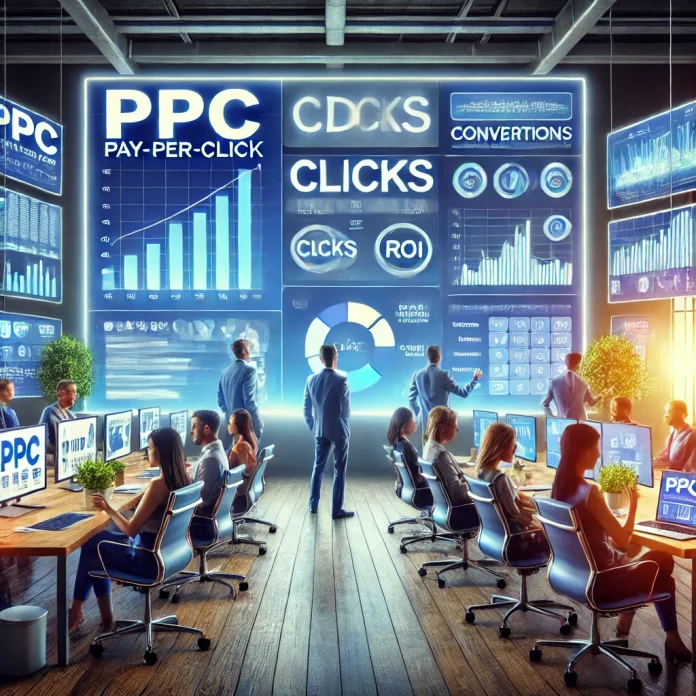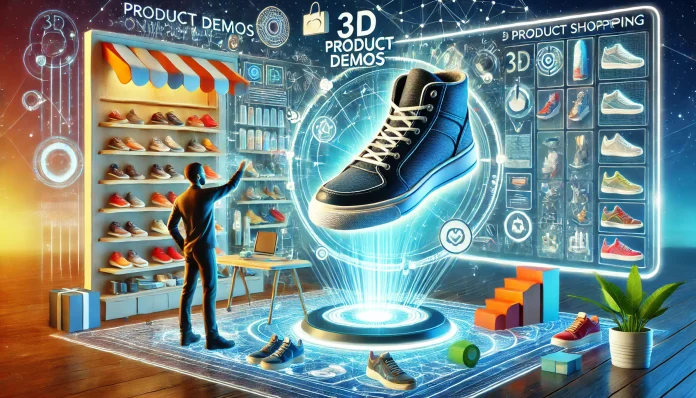Pay per click (PPC) advertising is one of the most effective and widely used tools in digital marketing. With businesses seeking ways to maximize their online presence, PPC campaigns have emerged as an essential component for driving immediate traffic, generating leads, and boosting sales. For digital marketing agencies, PPC has become a powerhouse strategy that delivers measurable results and high returns on investment. In this article, we will examine why PPC is so valuable to digital marketing agencies, and how it plays a pivotal role in their overall service offering.
What is PPC?
PPC, or pay per click advertising, refers to a type of online advertising where advertisers pay a fee each time their ad is clicked. This model allows businesses to bid for placement on search engines, social media platforms, and other online spaces where ads can be displayed. Common platforms for PPC include Google Ads, Bing Ads, and social media platforms like Facebook, Instagram, and LinkedIn. A PPC marketing agency specializes in managing and optimizing PPC campaigns, helping businesses maximize their online visibility and return on investment through targeted advertising strategies.
The Importance of PPC for Digital Marketing Agencies
PPC is particularly powerful for digital marketing agencies for several reasons. Below, we highlight the key factors that make PPC an essential service:
1. Immediate Traffic Generation
Unlike organic strategies, such as SEO, which can take time to show results, PPC campaigns provide instant visibility. Once a PPC campaign is set up and the ads are live, businesses begin to see traffic almost immediately. This immediacy is especially valuable for digital marketing agencies looking to demonstrate quick results to their clients.
- Instant visibility: With PPC, ads are displayed on the search engine results page (SERP) or social media almost as soon as the campaign starts. This rapid exposure is ideal for businesses that need fast visibility.
- Targeted audience: PPC allows agencies to target ads based on specific keywords, locations, demographics, and behaviors, ensuring that the traffic they attract is highly relevant.
2. Cost-Effective Advertising
PPC is often seen as a cost-effective way to advertise, especially when compared to traditional advertising methods like TV or print. Digital marketing agencies can control the budget of each campaign and only pay when a user clicks on an ad. This makes it easier to track the return on investment (ROI) and adjust campaigns based on performance.
- Flexible budgeting: Agencies can manage the daily and monthly budget of a campaign to ensure it stays within a client’s financial limits.
- Pay for results: Since advertisers only pay when someone clicks on an ad, PPC is performance-driven, meaning the client only pays for actual engagement, not just impressions.
3. Measurable Results
One of the key benefits of PPC is the ability to measure and track results in real-time. Digital marketing agencies can access detailed analytics to see exactly how a campaign is performing, including the number of clicks, impressions, conversions, and cost per click (CPC). This data-driven approach enables agencies to optimize their campaigns and continually improve their performance.
- Analytics tools: Platforms like Google Ads and Facebook Ads Manager provide comprehensive reporting tools to track the success of each campaign.
- A/B testing: Agencies can test different ads, keywords, and targeting strategies to determine which ones perform the best. This allows for constant refinement and optimization.
4. Highly Targeted Advertising
PPC campaigns allow digital marketing agencies to reach specific audiences through advanced targeting options. Whether it’s based on user intent, demographic data, or geographic location, PPC ads can be tailored to ensure they reach the right people at the right time. This high level of targeting precision makes PPC an extremely effective tool for driving conversions.
- Keyword targeting: By selecting relevant keywords, PPC campaigns can target users who are actively searching for specific products or services.
- Demographic targeting: Ads can be customized based on age, gender, interests, income level, and more, helping to refine the audience even further.
- Geo-targeting: With geo-targeting, agencies can show ads to users in specific locations, whether it’s a particular city, region, or even a radius around a physical store.
5. Increased Brand Visibility
Even if users don’t click on an ad, the mere presence of the ad on the search engine results page (SERP) or social media can increase brand visibility. For digital marketing agencies, this helps build awareness for their clients and positions their brand in front of potential customers who may be interested in their services or products.
- Brand awareness: PPC campaigns ensure that the client’s brand appears on the first page of search engine results, even if the user doesn’t click on the ad.
- Top-of-mind recall: Consistent ad exposure can keep a brand top-of-mind, leading users to search for it later or engage with it through other channels.
6. Control Over Campaign Strategy
PPC campaigns offer a high level of control, allowing digital marketing agencies to manage every aspect of the campaign. Agencies can set ad copy, choose the right keywords, define their target audience, and determine the budget—all within the constraints of the client’s goals and objectives. This level of control makes PPC a flexible and adaptable tool that can be tailored to fit different marketing strategies.
- Customizable ad formats: Agencies can experiment with different ad formats, such as text ads, display ads, video ads, and shopping ads, to see which ones resonate best with the target audience.
- Campaign objectives: Agencies can set specific goals for each campaign, whether it’s driving traffic, increasing conversions, or boosting sales.
7. Supports Other Marketing Channels
PPC works well alongside other marketing strategies such as SEO, content marketing, and email marketing. By combining PPC with other efforts, digital marketing agencies can enhance their client’s overall digital presence and create a more comprehensive approach.
- SEO and PPC synergy: While SEO focuses on organic results over time, PPC can help bring immediate traffic. Agencies can use PPC data to discover high-converting keywords that can later be incorporated into an SEO strategy.
- Remarketing opportunities: Agencies can use PPC campaigns to remarket to people who have already visited a client’s website but didn’t convert, improving the chances of getting a return visit and conversion.
8. Improved Conversion Rates
PPC allows businesses to target users who are already showing interest in their products or services, which often results in higher conversion rates. Since the ads are highly relevant and shown to the right people at the right time, they have a greater chance of leading to actual sales or leads.
- High-intent traffic: By bidding on keywords that indicate user intent, agencies can attract visitors who are actively looking to make a purchase or inquire about services.
- Optimized landing pages: Agencies can create dedicated landing pages for each PPC campaign, ensuring that the user experience aligns with the ad’s messaging, which increases the likelihood of conversion.
9. Competitive Advantage
In competitive industries, PPC provides a significant advantage by helping businesses appear at the top of search results or in users’ social media feeds, ahead of their competitors. Digital marketing agencies can use PPC to ensure their clients’ brands maintain visibility even when competition is fierce.
- Stay ahead of competitors: PPC helps businesses stay competitive by ensuring they appear at the top of search results, even in competitive markets.
- Competitor targeting: Some PPC platforms, like Google Ads, allow businesses to target keywords that their competitors are bidding on, making it possible to capture their audience.
10. Flexibility Across Industries
PPC is versatile and can be applied to virtually any industry. Whether the client is in retail, healthcare, education, or professional services, PPC campaigns can be tailored to suit any business model. Digital marketing agencies can work across a wide range of industries and develop unique campaigns that align with the needs of each client.
- Diverse use cases: From eCommerce businesses seeking to drive sales to service-based businesses looking for leads, PPC is adaptable to many business types.
- Scalability: As a business grows, the PPC strategy can scale to match its increasing goals. Whether it’s expanding the geographic reach or increasing ad spend, PPC campaigns can grow with the business.
Conclusion
PPC is undoubtedly a powerhouse for digital marketing agencies. Its ability to deliver immediate traffic, drive highly targeted leads, and provide measurable results makes it an indispensable tool in any agency’s marketing toolkit. By taking advantage of the flexibility, control, and real time data that PPC offers, agencies can not only meet their clients’ goals but also demonstrate the effectiveness of their strategies through tangible results. As digital marketing continues to evolve, PPC remains a core pillar of any successful online advertising campaign.










